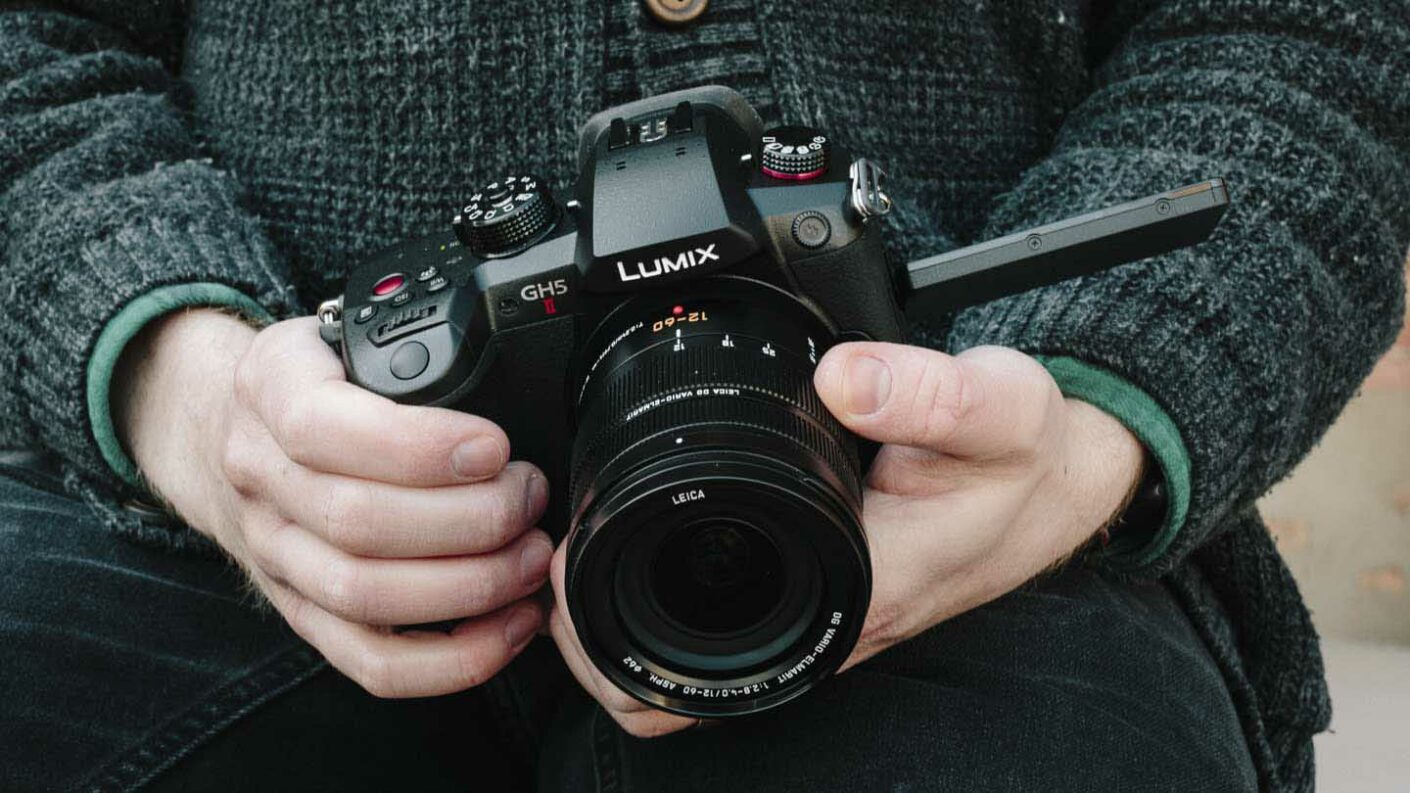Snap Verdict
As well as stills the GH5 is designed to shoot 4K video and it has an extensive range of features to give it appeal to professional videographers. Aspects such as the variable frame rates and 10-bit recording will be of particular interest along with the ability to add V-LogL recording via an optional software key.
Panasonic has used a new 20Mp sensor and processing engine for the GH5 and it’s capable of producing impressive stills and outstanding video.
For Panasonic GH5:
- Extensive video specification
- High-quality stills and video
- High-quality EVF and vari-angle touch-screen
Against Panasonic GH5:
- AF system not up to shooting sport
- V-Log modes are an extra expense
- Badly positioned Display button
What is the Panasonic GH5?
The GH5 is Panasonic’s flagship compact system or mirrorless camera and it has a mini-DSLR design, featuring a high-quality electronic viewfinder and vari-angle touch-screen. As a Micro Four Thirds camera it’s compatible with an extensive collection of Micro Four Thirds mount lenses from Panasonic and Olympus as well as third-party manufacturers.
Key Features
Inside the GH5 is a 20Mp Four Thirds type CMOS sensor with no optical low-pass filter to allow it to record more detail. This is paired with a new Lumix processing engine which enables a native sensitivity range of ISO 200-25,600. This can be expanded to a low setting of ISO 100 – that’s the same as the GH4.
The processor also enables a maximum continuous shooting rate of 12fps (frames per second) in single AF mode, or 9fps with continuous autofocusing.
Crucially, the GH5’s sensor can move to enable Panasonic’s 5-axis Dual IS II system and work in harmony with stabilised lenses to extend the safe hand-holding shutter speed and smooth out wobbles during video recording.
Video features
Videographers will be pleased to learn that there’s unlimited 4K video recording – most cameras can only record in bursts of up to 29minutes and 59 seconds. There’s also a choice between MOV, MP4, AVCHD Progressive and AVCHD formats at a variety of frame rates, the system frequency can be set to 59.94Hz, 50.00Hz or 24.00Hz.
In addition, there’s a Waveform Monitor and Vector Scope to meet the needs of professional videographers. This embeds SMPTE-compliant Time Code with Rec Run or Free Run counting to aid with multiple device synchronisation.
It’s possible to shoot 4096 x 2160 4K at 24p (or 3840 x 2160 4K at 60p, 50p, 30p, 25p, 24p with no cropping), 4:2:2 10-bit Full HD (1080p) recording and 4K 4:2:2 10-bit ALL-Intra MP4/MOV (apart from at 60/50p) and Full HD 4:2:2 10-bit ALL-Intra recording. The step-up from 8-bit to 10-bit recording vastly increases the range of colours that can be recorded.
A firmware update has also added high-resolution Anamorphic Video Mode and Hybrid Log Gamma for 4K HDR Video (for playback on HDR compatible televisions).
It’s also possible to add V-LogL recording via an optional software key (DMW-SFU1), with LUT (Look Up Table) and V-LogL View Assist to help experienced videographers get the colour and contrast they want.
Further good news for video shooters is that the GH5 can output live to an external recorder and simultaneous internal (there are dual SD card ports) and external recording is possible. Plus there’s an optional adaptor (DMW-XLR1) to allow an XLR microphone to be used for sound recording.
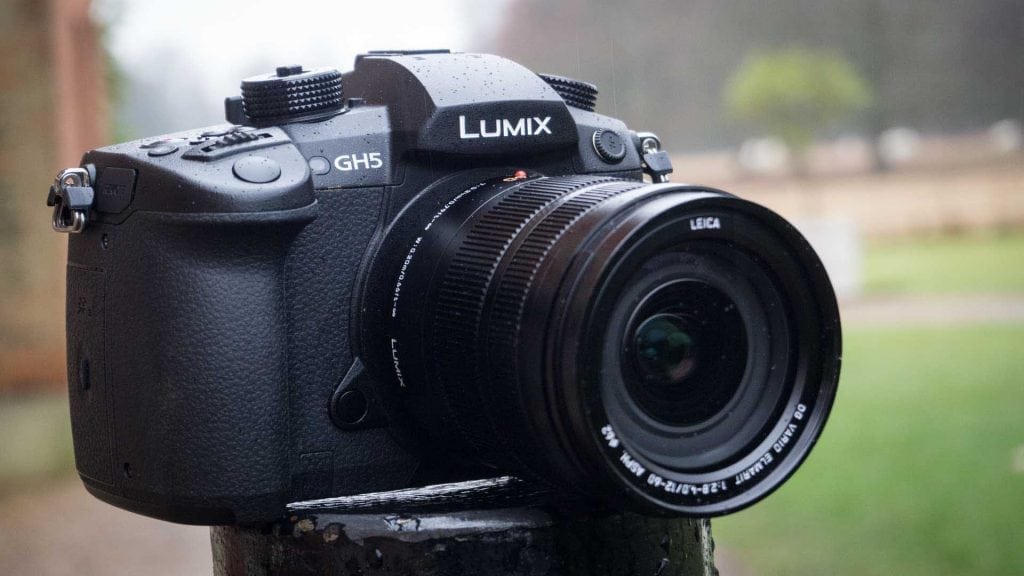
4K Photo Mode and 6K Photo Mode
Panasonic’s 4K Photo Mode harnesses video technology to capture 8Mp stills at 30fps (frames per second). The GH5 can also shoot in 4K Photo mode at 60fps. In addition, it has 6K Photo Mode (with Rolling Shutter Distortion Correction) which allows 18Mp images to be shot at 30fps. This makes a much more attractive proposition as the drop in pixel count is much reduced.
Following Nikon’s lead with SnapBridge, the GH5 has Bluetooth technology in addition to Wi-Fi connectivity for to enable an ‘always on’ wireless connection and automatic image transfer.
Panasonic GH5 Autofocus
As we have seen with the Fuji X-T2, Olympus OM-D E-M1 Mark II and Sony A6500, autofocus performance is one of the key targets for improvement with mirrorless system cameras. Panasonic has stuck with contrast detection (with Depth From Defocus Technology), spurning a hybrid system that adds phase detection, but it has also put considerable effort into developing the GH5’s AF system. Its sensor read-out is twice the speed of the GH4’s this helps bring a claimed response time of 0.05sec.
In addition, the number of AF points has been boosted from 49 to 225 and there’s a new customisation option that provides control over aspects such as AF sensitivity, AF area switching sensitivity and movement predictability that should be of use to those shooting action.
In video mode, the autofocus can be set to adjust with constant speed, for smoother, more professional looking adjustments. In addition, you can select two points within the scene and the focus will adjust from one to the other.
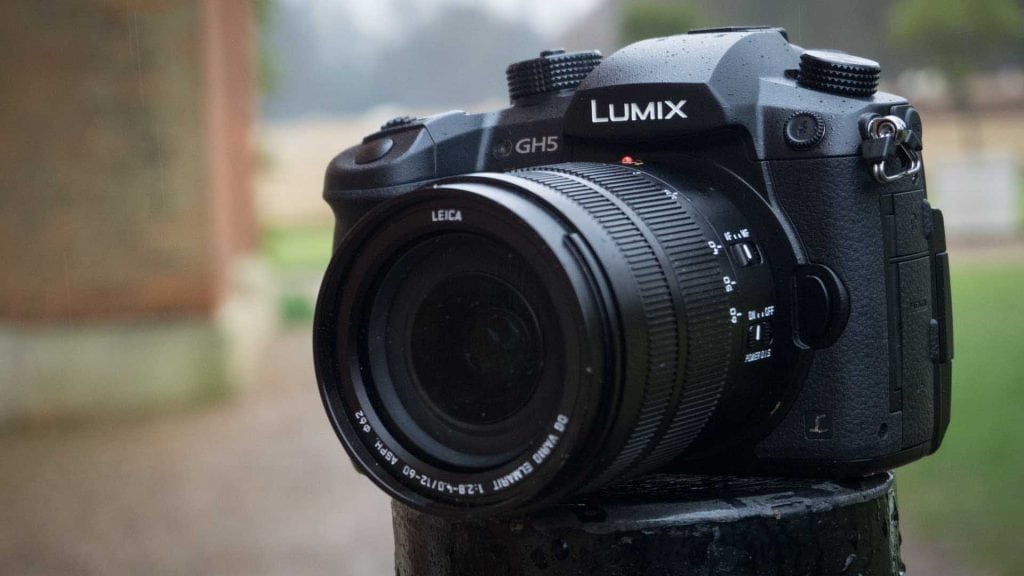
Panasonic GH5 Build and handling
Like the GH4, the GH5 has a magnesium alloy construction and is dust- and splash-proof. However, the new flagship camera is also freeze-proof to -10C.
In addition, the shutter is built to withstand 200,000 releases. Interestingly, the GH5’s shutter uses a spring drive like GH4 rather than the magnetic system of the the GX80 and G80.
However, a floating construction for the shutter frame reduces the shock to the camera body to approximately one-sixth of that experienced by the GH4. The sound of shutter is also reduced to about the same as the GX80 and G80. The GH5’s spring design is necessary for high shutter speed of 1/8000 sec.
When you’re firing the camera at 9fps, it feels pretty smooth, but then there’s no mirror clacking about inside either.
Design
Like the GH4, the GH5 a pretty large camera considering its Four Thirds type sensor, but Panasonic claims to maintain the larger size to make the handling more comfortable. Sure enough, the GH5 has a nicely proportioned and shaped grip that makes it feel safe in your grasp. The buttons and dials are also distributed well and not cramped together.
In many respects the GH5 looks like the GH4, but there are a few key differences. The AF/AEL button and focus mode switch on the back of the camera, for example are a little easier to reach with your thumb and just below them sits a new mini-joystick controller that speeds AF point selection (hurray!).
The video record button which is on the back of the GH4 has been relocated to the top-plate of the GH5 – a more familiar location for many.
I also like the fact that the thumbwheel on the back of the camera is a little broader, which makes it easier to locate and use when your eye is at the viewfinder.
One issue I have with the GH5’s button layout is that the DISP button is near the thumb-rest and I’ve accidentally pressed it on numerous occasions, changing the view on-screen or in the viewfinder – which is quite annoying.
Viewfinder and screen
Turning to the subject of the viewfinder, this is still a 21mm OLED device, but its resolution has been bumped up from 2,360,000 dots to 3,680,000 dots and the magnification is 0.76x rather than 0.67x. It provides a very clear and detailed view of the scene.
Panasonic has also upgraded the rear screen and it now measures 3.2-inches across the diagonal and has 1,620,000 dots. It’s still a vari-angle unit but instead of an OLED screen it’s an RGBW LCD. It provides a nice sharp view and the revised menu, which has fewer pages but more lines, is clear. The screen also responds quickly to tap of your finger.
The GH5 is a complex camera and it will take some getting to know, but all the main controls that you want on a shot-by-shot basis, for example to adjust exposure and white balance or to set the AF point are within easy reach. There are also plenty of customisable buttons to help you get it working as you want.
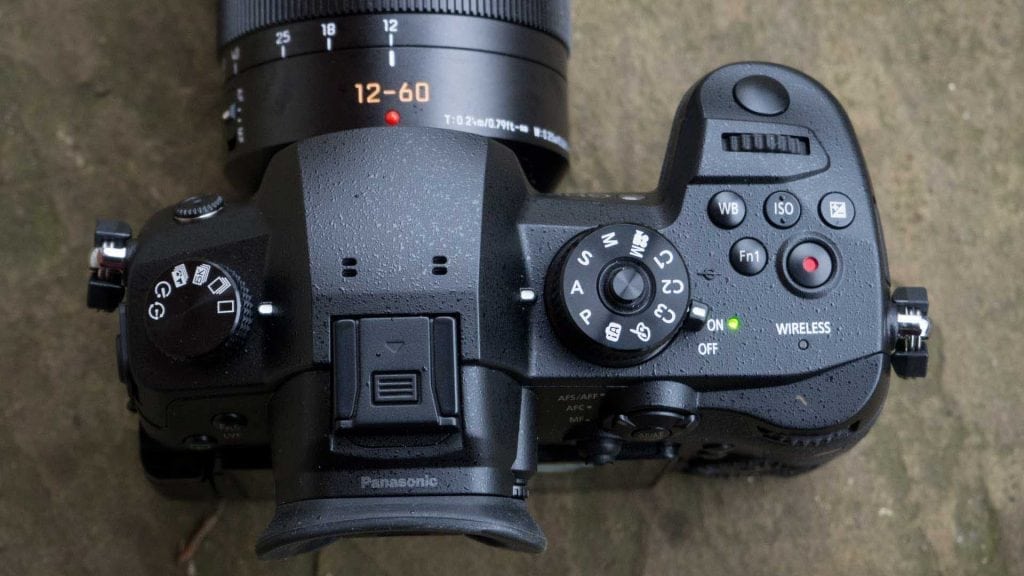
Panasonic GH5 Performance
The first thing that struck me about the images from the GH5 was that they are brighter and punchier than those from the GH4. There’s also a good level of detail visible and this helps emphasise the fall-off in focus when you shoot at wide apertures.
Recent Panasonic cameras’ metering systems have proved very capable and the same is true for the GH5. It does a good job on its own in most situations so the exposure compensation control is largely left unused.
Of course, as the GH5’s screen and viewfinder can preview images with the camera settings applied, you should notice if there’s going to be any over or underexposure and take corrective steps. If you do underexpose images for any reason there’s reasonable scope for post-capture brightening, especially with the raw files.
Panasonic’s automatic white balance system also performs well in the GH5, producing close to natural-looking images in some artificial lighting conditions and very good results in natural lighting.
Detail and Noise control
As it has a Four Thirds sensor the GH5 is at a slight disadvantage to a camera with a larger device when it comes to noise control, but Panasonic has put lots of work in here and the GH5 actually fares well. At the highest sensitivity setting, ISO 25,600, raw files look decent at normal viewing sizes with an even granular texture visible in even toned areas. In comparison, the jpegs look clean but some have a diffused look which makes the raw files preferable. Better results are achieved at ISO 3200 and 6400, I’d advise making one of those your maximum setting.
At the lower sensitivity settings, the GH5 produces images with lots of detail, helped no doubt by the lack of an optical low-pass filter on the sensor. There’s no reason for GH5 users to look enviously at APS-C format camera users.
Autofocus
There’s no question that the GH5’s autofocus system is faster than in earlier Panasonic cameras, but I was only able to get a few sharp images of my dog running around, it really struggled to get him sharp. You can read more about my experiences of photographing him by clicking on the link below.
Panasonic has subsequently issued a firmware update to improve the GH5’s autofocusing and it has improved but not to the extent of making it a good choice for shooting sport.
Image Stabilisation
Panasonic claims a 5-stop compensation factor for the GH5’s Image Stabilisation (IS) system and it certainly delivers. I tried hand-holding at a shutter speed of 1sec with the Leica DG 12-60mm f/2.8-4 at the 19mm point (equivalent to 38mm) and found that I got a 100% hit rate. That opens up the scope for shooting without a tripod.
Video after the v2.0 firmware update
We spoke to experienced reviewer Damien Demolder and filmmaker Jim Marks, who have both used the GH5 extensively before and after the firmware update, and asked them to give us their take on the impact of firmware V.20 and V 2.1 which can be downloaded via this link:
Here’s what they had to say.
Damien Demolder
October 2017 saw a massive firmware update for the Panasonic Lumix DC-GH5 that had a profound effect on the quality and flexibility of the camera’s video features. Although the GH5 was already well regarded for its video and the high-end functions it offers, the v2.0 firmware has taken it well beyond what is expected for a camera in this class.
The principal changes made with Firmware v2.0
4K 4:2:2 10-bit 400Mbps ALL-Intra
FHD 4:2:2 10-bit 200Mbps ALL-Intra
4K HDR video in Hybrid Log Gamma
6K anamorphic mode
4K anamorphic 4:2:2 10-bit 400Mbps ALL-Intra
De-squeeze assist viewing mode
Improved AF and IS in video modes
The changes that relate directly to improved image quality in general video mode are the data rates and the All-Intra compression. The data rates, along with the 4:2:2 colour and 10-bit recording, allow a massive amount of data to be recorded, meaning that the camera produces highly detailed footage. All-Intra compression also helps to maintain clear details by compressing each frame individually rather than compressing groups of frames, as is usual in most consumer video cameras.
The result is footage with more tonal and textural information via the dynamic range of the sensor and the amount of data stored in the footage. What is particularly significant is that this broadcast-quality footage can be recorded in-camera directly to the memory card – you don’t have to stream out via HDMI to get it. You will though need a very fast card to cope with the flow of data for more than a few seconds. Panasonic has introduced a pair of V90 cards specifically for the occasion.
6K Anamorphic mode
The advantages of shooting in 6K over 4K are obvious, and the new firmware brings that additional resolution to the anamorphic shooting mode of the GH5. A new de-squeeze display mode allows the user to see the footage in its letterbox format live on the screen to make framing and composition easier. To give you an idea of the resolution of the 6K anamorphic video, when de-squeezed from 4:3 to the maximum 2.39:1 proportions each frame of the video is 33.5 million pixels.
Even without an anamorphic lens videographers can take advantage of this new feature, as working with a normal lens in the 6K anamorphic mode brings a little extra resolution to deliver 4:3 4992×3744 pixel footage that can be cropped nicely to 16:9 for 5K video.
The Hybrid Log Gamma shooting mode is designed to produce TV-ready video for those who have HDR televisions. The mode makes the most of the sensor’s dynamic range to produce video with deep, but detailed, blacks and punchy highlights.
Autofocus
The new firmware, and the subsequent v2.1, improve the AF tracking performance of the GH5 in video mode. The sensitivity of the system in low contrast conditions is the key to the improvements and it helps the camera to track and hold on to details in difficult light. The improvements do help but focus maintenance during video recording isn’t always perfect. The camera can be given to searching sometimes and can miss what seems like an obvious subject especially in low light conditions.
Jim Marks
With firmware v2.0 Panasonic has really cemented the GH5’s position as a video powerhouse. For me it really is the complete package, as with the XLR audio adaptor fitted, there’s not a lot this camera can’t do. The 422 10 bit ALL-Intra compression is a really robust codec, that responds well to aggressive grading and holds massive amounts of colour information.
Of course, it’s important to remember that with the top tier 400 Mbps camera data rates you need to use fast V90 SD cards.
It seems amazing that we are now at a stage where you actually sometimes need to pause and think if you need to use the maximum size on offer?
Whether you shoot in 10-bit 1080 HD or 4K with the GH5, the dynamic range is unmatched at this price point. While the different colour profiles, which are all customisable, and the option of V-Log allow me to tailor the look to each project.
The autofocus and stabilisation have also been upgraded, and Panasonic has listened and allowed us the option of now locking the rear display button, so my fat fingers no longer knock it while shooting!
I’m enjoying the comfort of dual SD slots so I can either relay or simultaneous record, or separate my photographs and video in-camera.
Micro Four Thirds advantage
I’m also finding the Micro Four Thirds mount the most versatile for video, in that I can literally mount any lens you can mention onto the camera with an adaptor. This is so useful as you can still use all of your original glass, as well as numerous anamorphic and cinema options.
I also much prefer the depth of field available with this sensor size, it genuinely gives me more focus room to play with when filming interviews.
The GH5 has finally become the camera we were promised at the start, and has laid down a very high marker for the competition. Is it perfect? No, but its a great start!
Video specifications
The tables below give some of the details of the video specifications brought by firmware v2.0
Sample Images




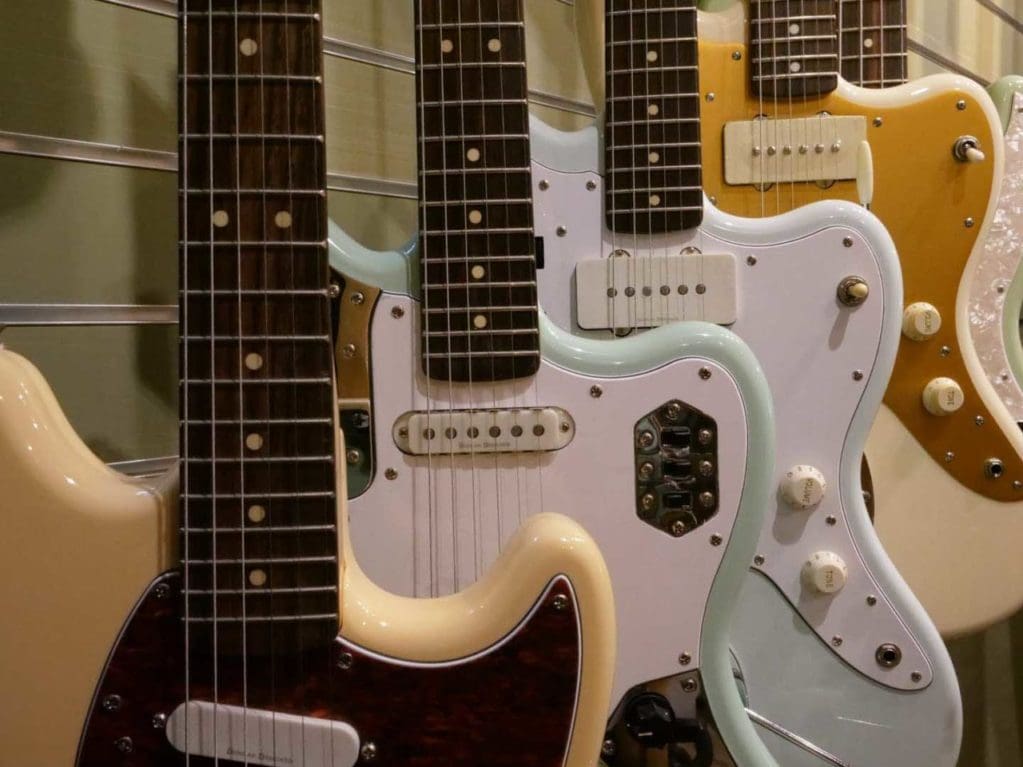
Follow this link to browse and download full resolution Panasonic GH5 sample images
Panasonic GH5 Verdict
While the Panasonic GH5 is a very good capable stills camera, its real strength lies in its video capabilities. It offers videographers the kind of specification and video quality that is normally only made possible by a much larger, more expensive cinematic camera. It’s even possible to connect XLR mic via an optional adaptor.
In addition to the extensive range of video quality, format and frame rate options, the GH5 has a high-quality viewfinder, excellent vari-angle touch-screen and both 4K Photo and 6K Photo mode to simplify capturing fleeting moments. It’s also dust and weatherproof so you can use it without concern outdoors.
The only disappointment with the GH5 is with its autofocusing, which although improved by the firmware update is not up to the standard offered by some other cameras.
Panasonic GH5 Rating
Overall Score: [4.5]
Features: [4.5]
Build and Handling: [4.5]
Performance: [4.0]
Image Quality: [4.5]
Should I buy the Panasonic GH5?
Including all the features that serious videographers need brings a layer of complexity that will not suit all users. If you mainly shoot stills and just dabble in video making then the GH5 may not be the camera for you. A more stills orientated camera like the new Panasonic G9, for example, could be just the ticket.
If however, you want to get serious about shooting video then the GH5 is a very serious contender.

